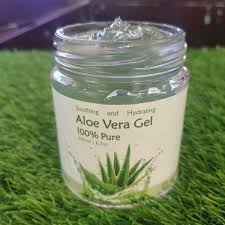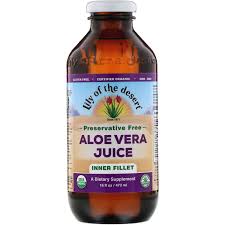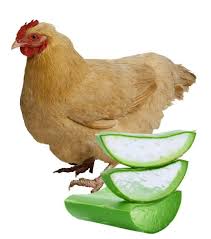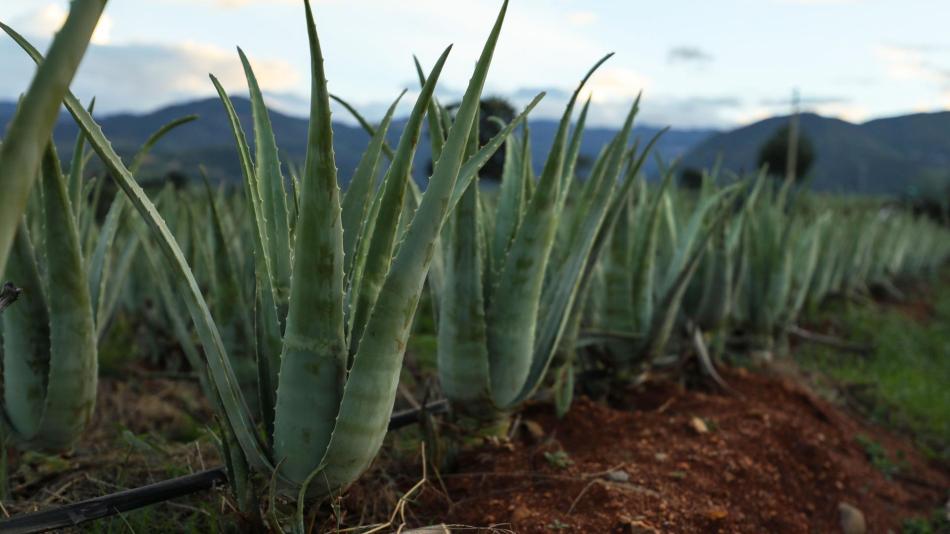One of my egg customers recently gave me a bottle of organic Aloe Vera juice. I’ve used the gel directly from a plant to treat burns, but wasn’t aware that it was also marketed as juice. I’m willing to try pretty much anything, but was also curious as to what were the benefits of the product. Of course, for me, google research usually leads to a link with chickens. I’m glad to say that it didn’t disappoint, in that regard.
Aloe Vera, one of over 400 species of aloes, originated in Sudan and spread throughout the Mediterranean and other warm climate areas. You might be familiar with it as a popular perennial house plant with its long, pointed spongy leaves that are joined at the base. If you’ve snapped one of those spear-shaped leaves you’ll know it’s filled with a clear gel composed of almost @99% water, but the remainder contains more than 75 active ingredients which have medicinal properties that are useful in treating diseases.
Hidden in that unassuming sap are vitamins: A, B1 (Thiamine), B2 (Riboflavin), B3 (Niacin), B12, C, E; minerals (calcium, copper, iron, magnesium, manganese, potassium, phosphorous, sodium and zinc) and 8 amino acids. Additional components assist in the breakdown of sugars and fats; promote healing; act as an anti-inflammatory, antimicrobial, antiseptic, antiviral, antifungal or analgesic; boost gut health; or increase blood circulation.




Aloe Vera has a long, documented history of medicinal use in India, Asia, Latin America and the Caribbean. Its uses include treatment for constipation, colic, skin diseases, worm infestation, diabetes and fungal diseases. It’s one of the few herbal medicines in common usage in Western medicine and was listed as a purgative and skin protectant by the U.S. pharmacopoeia in 1820 and used clinically in the 1930s for the treatment of burns.
It’s also widely used in the cosmetic, food and pharmaceutical industries: as a base material for skin moisturizers, soaps, shampoos, and other toiletries; in health drinks and as a bitter agent; and medical topical gels and ointments. Clinical trials have been conducted on its use for skin conditions, management of burn and wound healing, constipation, diabetes and gastrointestinal disorders.


Studies of Aloe Vera use in poultry have concluded:
- Anticoccidial: 0.1 to 0.5% Aloe Vera powder added to feed resulted in a lower incidence of coccidiosis.
- Intestinal health: 1.5 to 2.5% powder in feed improved gut microflora, increased Lactobacillus count and decreased E. coli count.
- Antibacterial: It can assist in inhibiting the growth of Staphylococcus aureus, E. coli, Pseudomonas aeruginosa, and Salmonella.
- Immune enhancement: 2% Aloe Vera gel added to drinking water or feed (at 0.5 to 1%) showed a significant increase in antibodies against Newcastle Disease Virus.
- Wound healing: Aloe Vera gel promotes the production of hyaluronic acid and hydroxyproline, which are important components involved in wound healing.
Most of us don’t have access to Aloe Vera powder to use as a food additive, but many of us do grow them as house plants. The gel can be used topically to treat wounds, frostbite and burns. You can purchase juice or make your own from crushed leaves. One part Aloe Vera juice added to 10 parts drinking water can increase immune system response and decrease microbial pathogens in the gut.
I currently add crushed garlic and apple cider vinegar to my flock’s water on a rotating basis once or twice a month. I might consider including Aloe Vera juice in the rotation as an easy, affordable and natural way to improve their health.
Credits: NCBI; Poultry DVM; Poultry Punch. Featured Image: CGTN

Awesome! Yet another reason to love Aloe Vera!!!
LikeLiked by 2 people
This is very informative and useful post. Thanks for sharing!
LikeLiked by 2 people